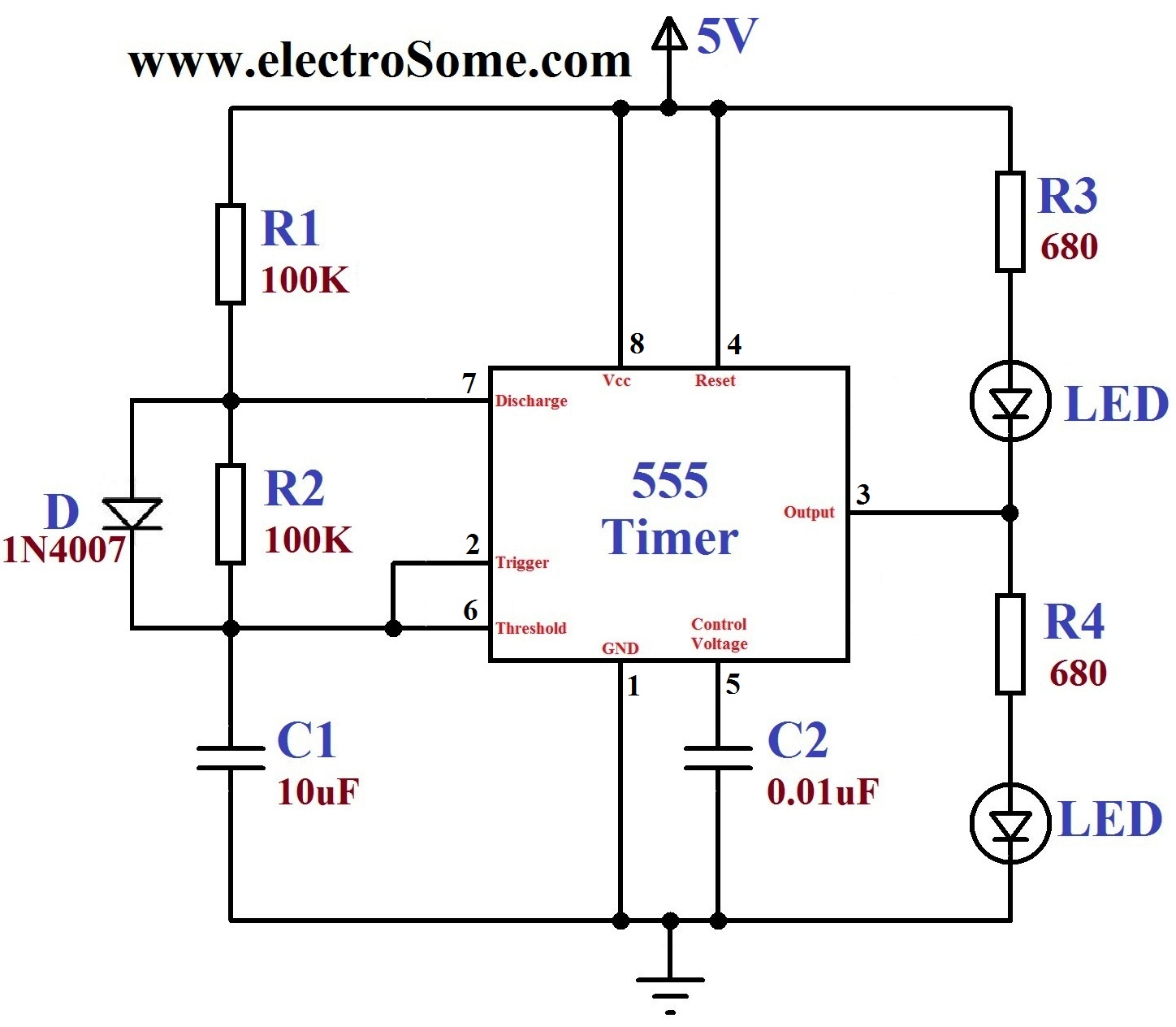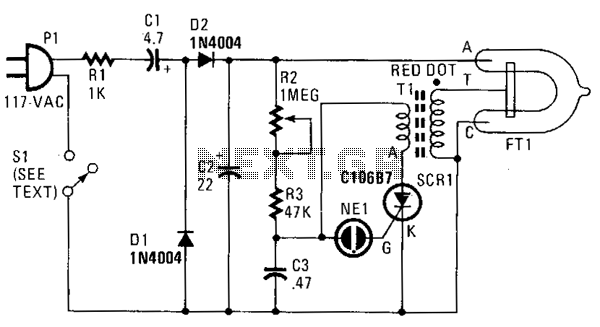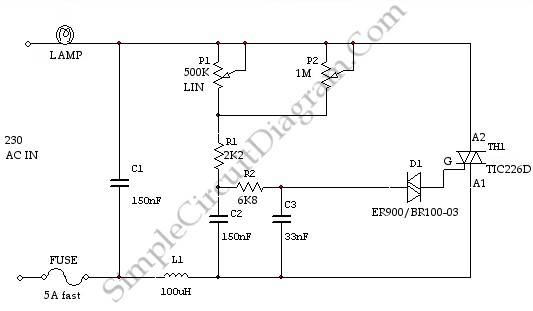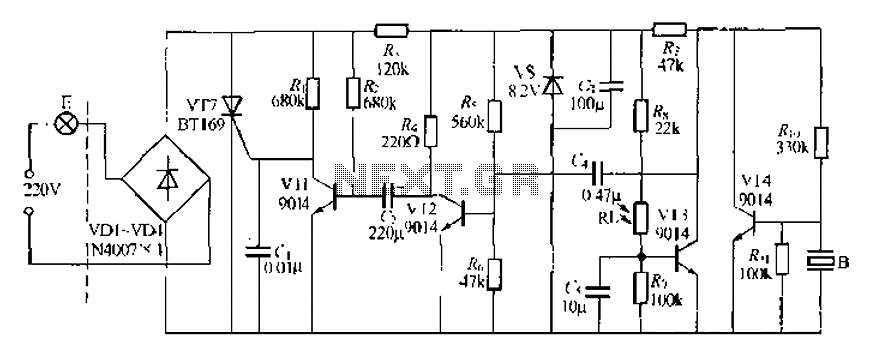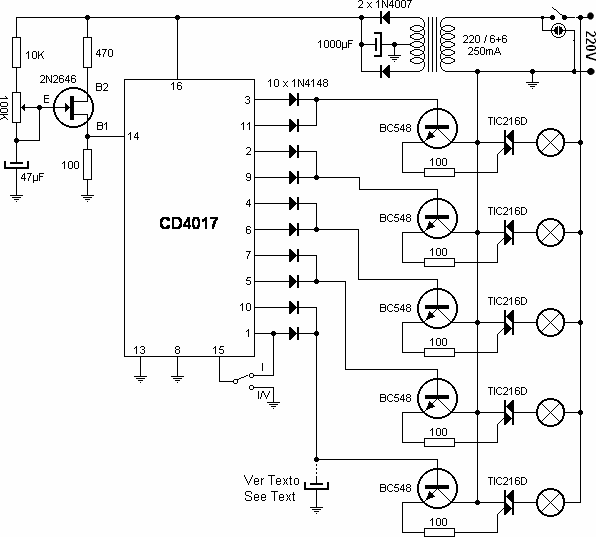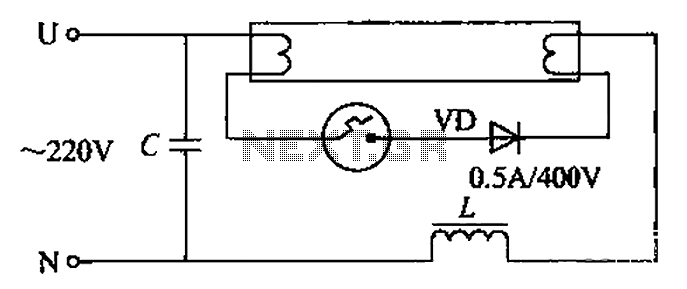
AT89C2051 Night Light Saver
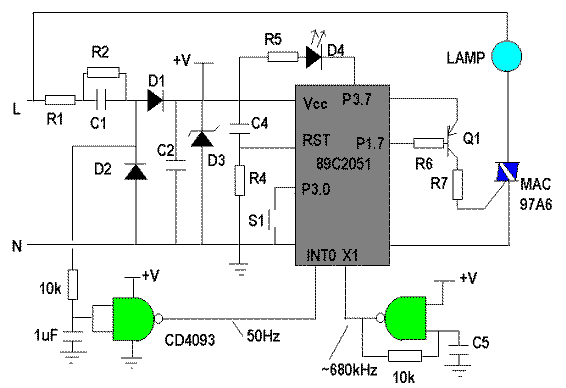
The Saver V5.0 operates a simple clock emulation program that controls a night light, turning it on and off at preset times, specifically from 19:00 to 22:00 every day. The design is characterized by its low cost, ease of installation, absence of battery backup, and minimal electromagnetic interference (EMI). The circuit utilizes the AT89C2051 microcontroller, which is driven by an external oscillator generated by a Schmitt trigger gate (CD4093) at approximately 680 kHz. The reference frequency is derived from the 50 Hz mains line. Time setting is accomplished by pressing the time set button once at 18:00. In the event of a mains failure, a functioning LED will blink at a high rate. Due to the lack of battery backup, the button must be pressed again to reset the system. The output is capable of driving a load, such as a 25W incandescent lamp.
The Saver V5.0 circuit is designed for efficient control of a night light based on a simple time schedule. It employs the AT89C2051 microcontroller, which serves as the core processing unit. The microcontroller's clock signal is generated by a Schmitt trigger inverter (CD4093), which ensures a stable and reliable oscillation at approximately 680 kHz, suitable for the timing functions required in this application.
The system's timekeeping is synchronized with the 50 Hz mains frequency, providing a reference that enhances accuracy. Users can set the operational time for the night light by pressing a designated button at 18:00. This simple user interface allows for straightforward programming of the light's on and off cycle, ensuring that the light is operational during the evening hours.
In the event of a mains power failure, the system incorporates a visual indicator in the form of a blinking LED. This feature alerts users to the power interruption, prompting them to reset the system by pressing the time set button again. The absence of battery backup means that the system relies entirely on the mains power for operation, which simplifies the design and reduces costs but requires user intervention in case of a power outage.
The output stage of the circuit is designed to drive a 25W incandescent lamp, which is a common choice for night lighting applications. The circuit's design ensures that it can handle the necessary load without overheating or experiencing performance issues. Overall, the Saver V5.0 represents a practical solution for automated night lighting, combining low cost and ease of use with essential functionality.The Saver V5. 0 runs simple clock emulation program, turns a night light on and off with preset time, say 19:00 to 22:00 everyday. The design features low cost, easy installation, no battery backup and no EMI. The AT89C2051 uses external oscillator generated by Schmitt trigger gate CD4093, ~680kHz. Reference frequency was derived from 50Hz main lin e. Time setting only allows at 18:00 by pressing time set button once. If main line has failed, functioning LED will blink at high rate. Since there is no battery backup, thus repressing the button is then needed. The output is capable of driving say, a 25W incandescent lamp. 🔗 External reference
The Saver V5.0 circuit is designed for efficient control of a night light based on a simple time schedule. It employs the AT89C2051 microcontroller, which serves as the core processing unit. The microcontroller's clock signal is generated by a Schmitt trigger inverter (CD4093), which ensures a stable and reliable oscillation at approximately 680 kHz, suitable for the timing functions required in this application.
The system's timekeeping is synchronized with the 50 Hz mains frequency, providing a reference that enhances accuracy. Users can set the operational time for the night light by pressing a designated button at 18:00. This simple user interface allows for straightforward programming of the light's on and off cycle, ensuring that the light is operational during the evening hours.
In the event of a mains power failure, the system incorporates a visual indicator in the form of a blinking LED. This feature alerts users to the power interruption, prompting them to reset the system by pressing the time set button again. The absence of battery backup means that the system relies entirely on the mains power for operation, which simplifies the design and reduces costs but requires user intervention in case of a power outage.
The output stage of the circuit is designed to drive a 25W incandescent lamp, which is a common choice for night lighting applications. The circuit's design ensures that it can handle the necessary load without overheating or experiencing performance issues. Overall, the Saver V5.0 represents a practical solution for automated night lighting, combining low cost and ease of use with essential functionality.The Saver V5. 0 runs simple clock emulation program, turns a night light on and off with preset time, say 19:00 to 22:00 everyday. The design features low cost, easy installation, no battery backup and no EMI. The AT89C2051 uses external oscillator generated by Schmitt trigger gate CD4093, ~680kHz. Reference frequency was derived from 50Hz main lin e. Time setting only allows at 18:00 by pressing time set button once. If main line has failed, functioning LED will blink at high rate. Since there is no battery backup, thus repressing the button is then needed. The output is capable of driving say, a 25W incandescent lamp. 🔗 External reference
